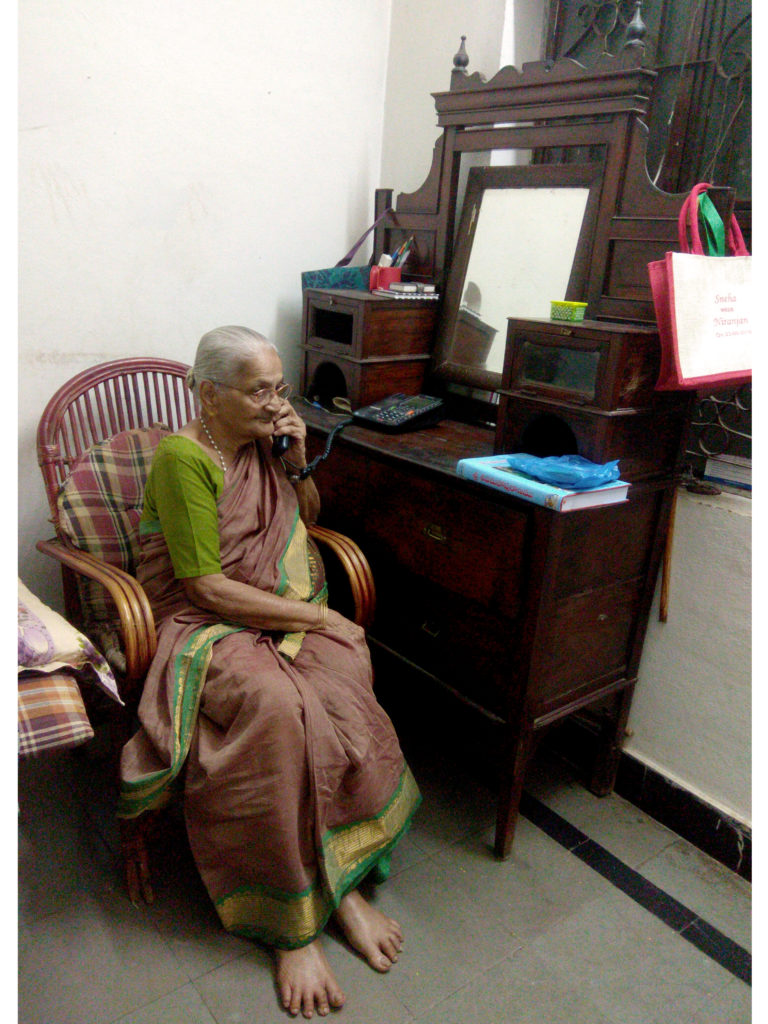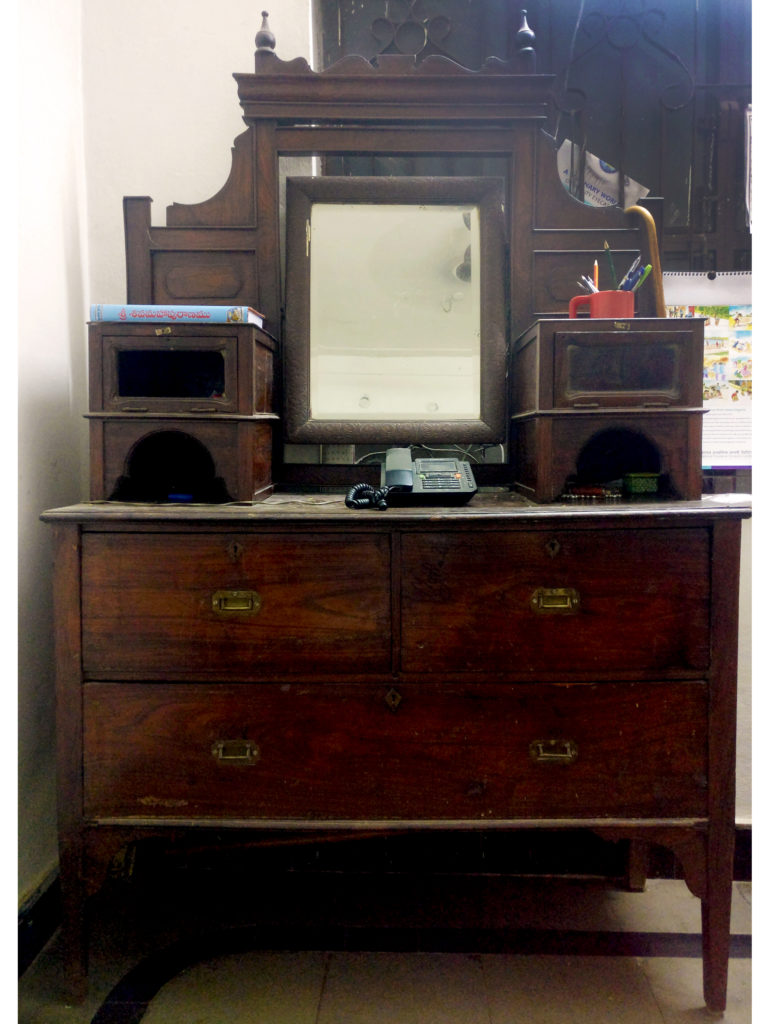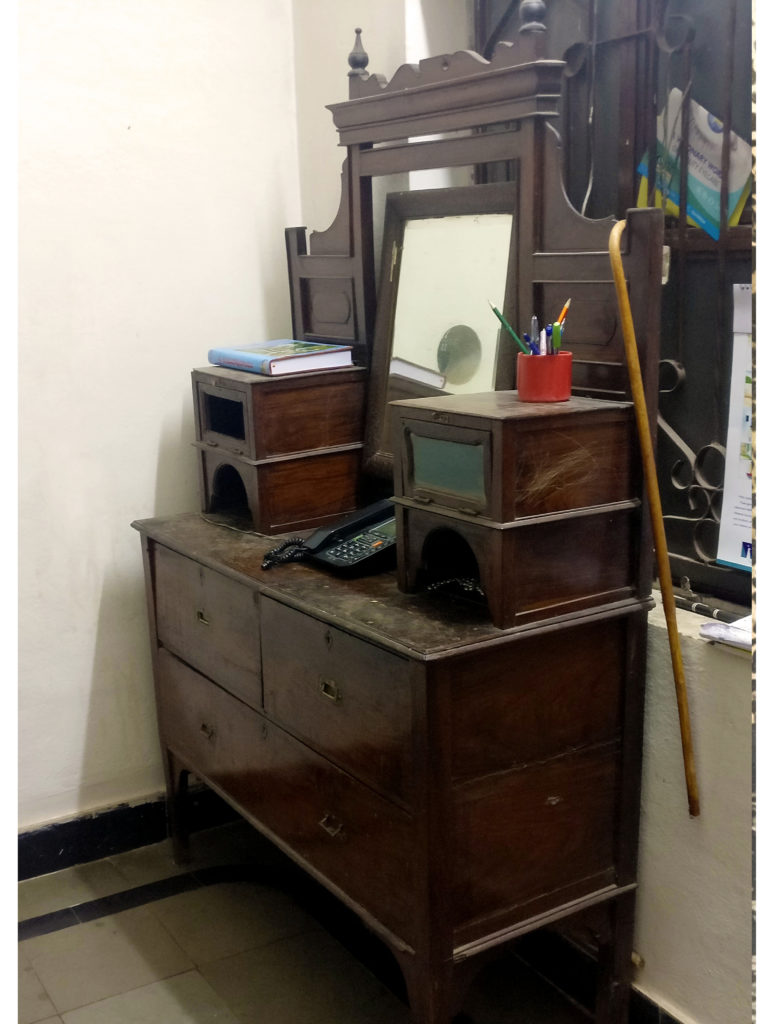TEXT & PHOTOGRAPHS BY RAM MOHAN KAVUTURU
Hyderabad, India
You wouldn’t guess my amamma (maternal grandmother) is 90 years old if you saw her eat. Even at her advanced age, she manages to live up to her standard of defining a person’s Telugu-ness: the coefficient of redness in the aavakaaya annam one eats.
The aavakaaya will pass no modern test of healthy food. It compromises nowhere and chooses the most potent in all its ingredients: sour mangoes, fierce chillies, pungent mustard, excessive salt and oil. This assault on the intestines, however, is a badge of honour for many like my amamma. She will even chide others attempting to water down the effect of the pickle by adding more rice to the mix, or adding extra dollops of ghee to the rice mix. She definitely can’t stand the sight of the pickle being used just as an accomplice to curd rice or pappu annam (dal chawal). Amamma, in fact, loves these potent assaults on the senses so much that she attributes her laser-sharp memory at her advanced age to these assaults. Like a well-catalogued library run by an efficient librarian, her mind can retrieve minor details of several events of her long life with amazing alacrity and accuracy.
Amamma’s long life has, naturally, seen plenty of ups and downs. On the personal front, she lost her husband before she turned sixty while her elder son died before he turned sixty; materially, she lost her ancestral home in Rajamundry and another property in Secunderabad, her adopted home. The loss of the Rajamundry home was particularly painful because of the grandeur and memories associated with it. Called manduva logili, these massive homes meant for joint families had rooms on the four sides opening up onto a spacious courtyard. With some families moving out and the remaining unable to burden the massive costs of maintenance, it became inevitable to bring the home down. With amamma herself relocating to Secunderabad, she was powerless to do anything about it. But, she shrugs off the painful memory with a smile and says, “at least this is the one thing that has remained with me all my life.”

Amamma and the dressing table 
The once-majestic rosewood table
The “one thing” amamma is referring to is a dressing table. In its heyday, the majestic rosewood-made dressing table must have grabbed the attention of all in the room with everyone wanting to develop a tress or a mane just to look majestic in the pristine mirror that shone large in the middle of the table.
“I just don’t get carpenters with linseed oil these days. This dressing table can shine again only if polished with linseed oil which many carpenters around here do not have” says amamma explaining the current state of the dressing table. Placed near the entrance of the main room of the small house she stays in, the table now is shorn of its former glory and more a stand for the landline phone which amamma is hugely fond of and it’s drawers a dumping ground for used clothes.
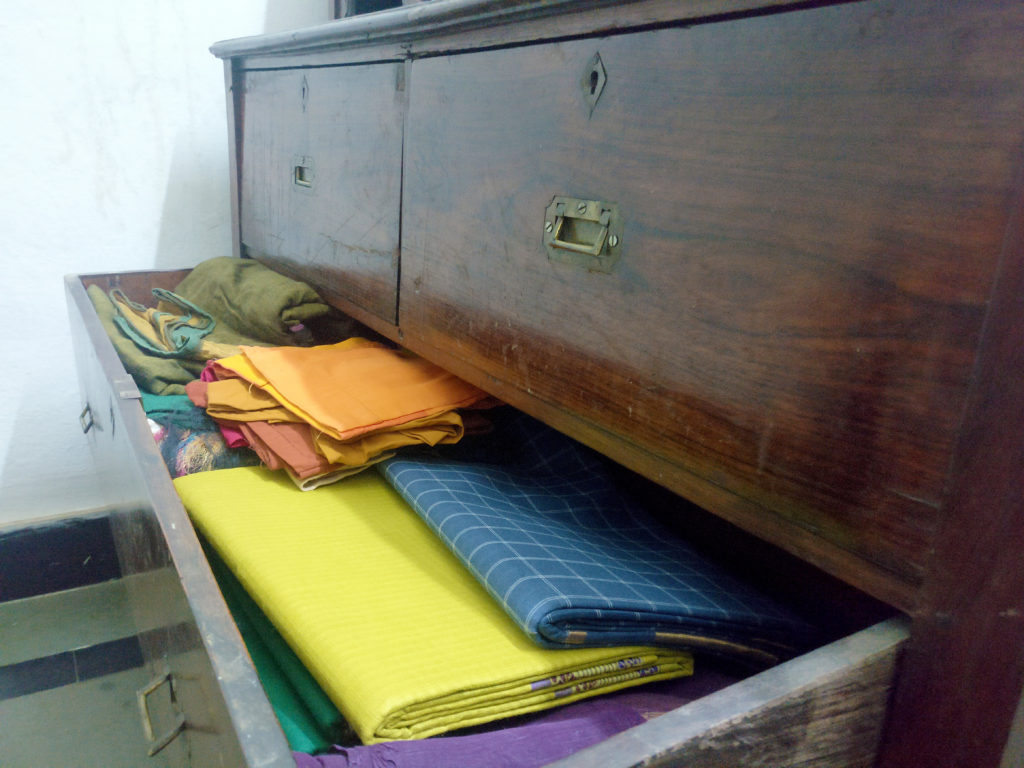
The story of the dressing table goes back to the 1920’s to what is now a nondescript town on the Andhra – Odisha border (the town falls in Odisha, to be exact): Parlakimidi or Parlakhemundi. The focal point of the town is the sublime 3-storey palace of the Gajapati kings who ruled Parlakimidi and surrounding areas before India’s independence. Having always referred to him only as the “Gajapati raju” or “Parlakimidi raju,” amamma does not know the name of the king. A quick search on the internet will reveal that the king in question around those times in all possibility is Krushna Chandra Gajapati, a man who would go on to have a significant role in creation of an Odisha-speaking state.
Amamma’s grandfather Sitaramaswamy was employed as a dewan (the title of a minister or a powerful government official in many of India’s pre-independent kingdoms) in the palace of the Gajapati king during the decade of the 1920s. In keeping with the demands of the times, the king and his dewan (amamma’s grandfather) felt the need to master English and decided to employ a governess from England to help them out. This dorasaani (countess) as amamma calls her, would go on to live for seven to eight years in the palace to teach the king and the dewan English. The dewan, in return, would teach the governess Telugu. In all the years of mutual teaching a good rapport had developed between the dewan and the governess to the extent that “rumors were strong in the town of something between the two,” amamma recalls with an impish smile. After seven or eight years in Parlakimidi, time had come for the governess to go back to England and the king felt it appropriate to reward his teacher handsomely. Among the many gifts he bestowed upon her, was a beautifully carved rosewood dressing table with an imposing mirror at the center of it.
A tradition among the affluent of those days, amamma recalls, was to send one’s daughter to her in-law’s place with a dressing table in tow. With the memory of the king’s gift to the English governess fresh in mind, it did not take the dewan long to get a similar one made for his daughter Sakuntala. The dewan’s son-in-law Venkataramaiah, fresh of a barrister degree, planned to stay back in Parlakimidi post the marriage to practise law in the local courts and thus at least at the start, for some years, the dressing table remained in Parlakimidi.
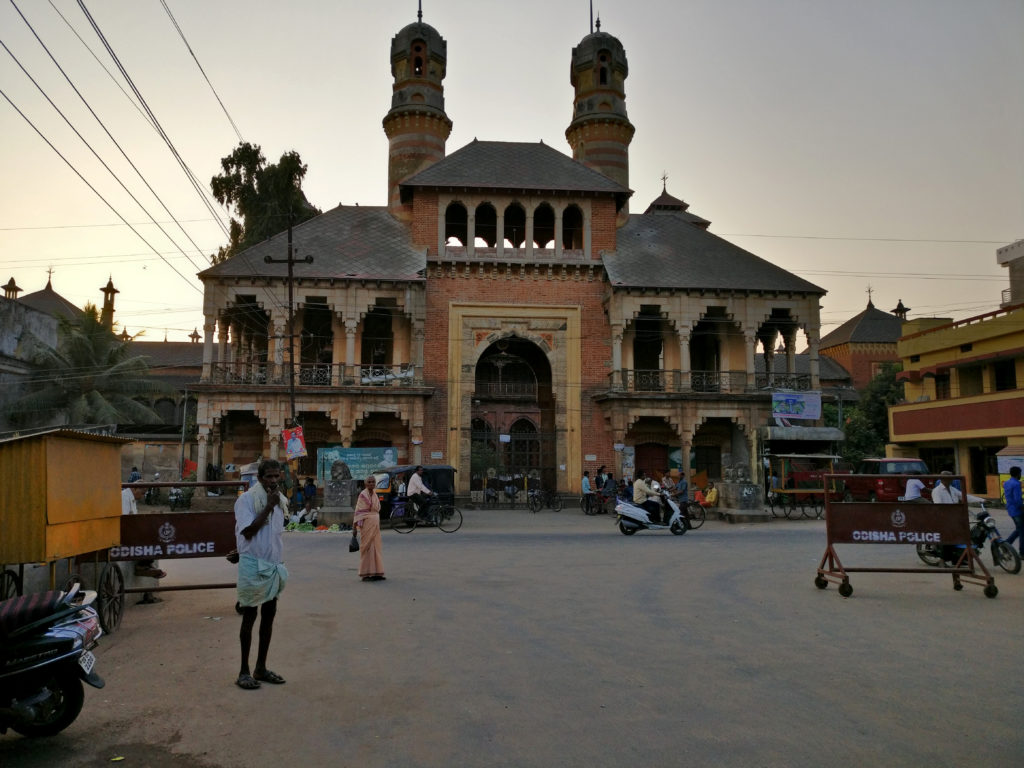
That the table would always be a trusted bridesmaid but never the glittering maid was written into its fate pretty early. Sakunthala died in 1938, 10 years after she had given birth to amamma. Amamma, obviously, has very feeble memory of her mother but does recall sepia-toned images of her mother spending hours in front of the dressing table mirror every morning. By the time of Sakunthala’s death the family had moved to Rajahmundry, her husband Venkataramaiah’s hometown, and so did the dressing table. With no one to care for and no one with long enough tresses to find use of the mirror, the table inevitably went into use for more mundane tasks. Venkatramaiah was obsessed with sniffing tobacco and the table was the ideal ground for him to line up his little cylindrical steel containers of snuff. Amamma remembers that Venkatramaiah also found good use of one of the finials of the table by hanging up his loosened turban.
Amamma was the exact opposite of her mother and hardly remembers spending any time in front of the mirror. “Tons of coconut oil and a good head bath,” are all the beauty tips she has to offer. Instead, amamma remembers spending plenty of time beside the table when she doubled up as a Receiver for her laywer-father during her student days. A Receiver is appointed by the court to safeguard valuables of two parties in dispute till a solution is found. The spacious drawers of the table were thought best to hold the valuables and amamma spent several hours gatekeeping the table when her father was not at home.


The dressing table
In the 1970s, amamma and the table moved to the cantonment town of Secunderabad along with her husband’s central government job. Amamma’s seemingly smooth life was shaken up by her husband’s premature death in the early 80s and a series of financial issues ensued. Amamma moved homes several times and each time lost something or the other including “tons of literature on Napoleon Bonaparte whom your grandfather greatly admired.”
Either by intention or sheer luck, however, the table has remained and made it this far. But, amamma is quick to add a caveat saying “this is heavy, takes up lots of space and is tough to maintain and i am getting old….” Before she could even end the sentence, the landline rings and amamma is off talking.
With amamma’s words audible in the background, my mind races through all the generations, people, events, and memories this seemingly dead piece of wood has seen. Just as it passes my mind that i should somehow find linseed oil good enough that can make the table shine again, amamma calls out: “This year’s stock of mangoes was really good and this summer’s aavakaaya is ready. Go have it with the hot rice in the kitchen.”

